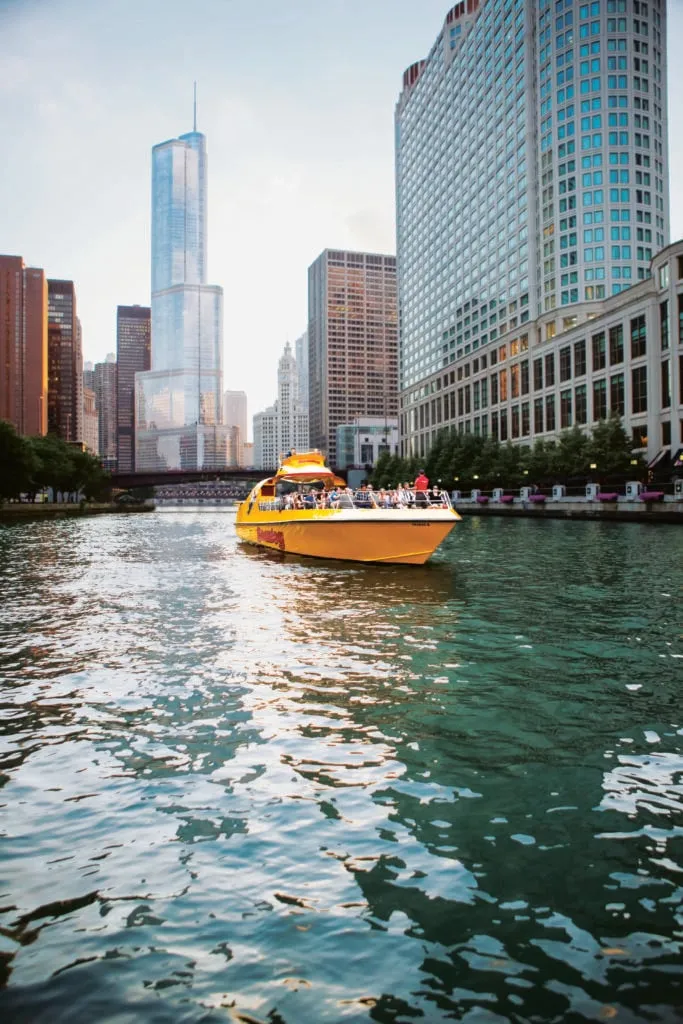Chicago, a city celebrated for its magnificent architecture, is globally renowned for its breathtaking skyline and impressive skyscrapers. Among these, the Willis Tower, formerly known as the Sears Tower, stands as an unmissable icon, a testament to architectural creativity and vision. However, beneath this modern grandeur lies a unique underground river system, playing a vital role in the city’s development.
Willis Tower: An Architectural Icon of Chicago

Willis Tower, previously known as Sears Tower, is an integral part of Chicago’s architectural history. In 1969, Sears Roebuck and Company, a massive retail corporation with 350,000 employees, needed a vast office space to accommodate its growth. Architects from Skidmore, Owings & Merrill were commissioned to design the building, and structural engineer Fazlur Khan conceived the innovative “bundled tube” concept, enabling the building to withstand both wind and gravity.
Construction of Willis Tower began in 1970 and was completed three years later. According to Skydeck, builders used an immense amount of concrete, enough to construct an eight-lane highway five miles long. This building is not only an engineering marvel but also a symbol of Chicago’s economic power and innovation.
Impressive facts about Willis Tower:
- 25 miles of plumbing
- 1,500 miles of electrical wiring
- 80 miles of elevator cable
- 796 restrooms
- Over 145,000 light fixtures

More than 12,000 construction workers, Sears employees, and Chicagoans signed the final beam before it was hoisted to the top of the building. The name Sears Tower remained in common usage even after Sears Roebuck and Company sold the building and moved out in 1988. It wasn’t until 2009 that the building was officially renamed Willis Tower, after the London-based insurance broker Willis Group.
Over the years, Willis Tower has undergone numerous changes and improvements:
- 1982: Broadcast antennas were added.
- 1985: The Wacker Drive Atrium, featuring distinctive curved glass, was built at the tower’s base.
- 2000: Skydeck, the observation deck on the 103rd floor, was renovated for the first time.
- 2015: Blackstone acquired Willis Tower.
- 2017: A 5-year renovation project began.
- 2022: Renovations were completed, including Art of the Neighborhood and a rooftop green space.

Willis Tower is more than just a building; it’s a vital part of Chicago’s architectural identity. The city’s diverse architectural styles make it a captivating destination for architecture enthusiasts.
Illinois Underground River System: A Hidden Lifeline
Alongside the above-ground architectural wonders, Chicago also possesses a complex underground river system, crucial for maintaining ecological balance and supporting the city’s economic activities. This underground river system, part of the Mississippi River basin, comprises aquifers, underground caves, and subterranean flows.
Importance of the Underground River System
- Water Supply: The underground river system is a significant source of water for domestic and industrial use in Illinois. Groundwater is used for irrigation, drinking water, and various industries.
- Flow Regulation: Underground aquifers naturally store and release water, helping to regulate river flows and mitigate flood risks.
- Ecosystem Maintenance: Groundwater plays a vital role in sustaining underground ecosystems, supporting unique flora and fauna.
- Agricultural Support: Groundwater is a precious resource for agriculture in Illinois, ensuring crop yields and food security.
Challenges and Solutions
However, the Illinois underground river system faces numerous challenges, including pollution, over-extraction, and climate change. Protecting this valuable resource requires comprehensive and effective solutions:
- Pollution Control: Implement pollution control measures from industrial, agricultural, and domestic sources to ensure groundwater quality.
- Extraction Management: Enforce strict regulations on groundwater extraction to ensure sustainable use and prevent water depletion.
- Conservation and Restoration: Conserve mangrove forests and wetlands, enhancing the soil’s water absorption and storage capacity.
- Awareness Raising: Increase public awareness and education about the importance of the underground river system, encouraging water conservation and efficient usage among residents and businesses.
Explore Chicago Architecture by River Cruise

One of the most fantastic ways to admire Chicago’s architecture, including Willis Tower, is by taking an architectural river cruise on the Chicago River. You’ll have the opportunity to see up close the unique architectural styles that have shaped this city.
Consider the Seadog River & Lake Architectural Tour, a 75-minute journey departing from Navy Pier, taking you along the Chicago River to explore famous landmarks and the city’s distinctive architecture. This is the only tour that takes you from the lakefront, through the locks, and along the Chicago River to Willis Tower.

Alternatively, you might choose the Premier Plus Architectural Brunch Cruise on the Chicago River, a more luxurious experience featuring a chef-prepared three-course menu and bottomless mimosas (for guests 21+). You’ll admire Chicago’s stunning skyscrapers while enjoying a delicious brunch and listening to fascinating stories about the city’s architecture.
Conclusion
Chicago is not only a city of skyscrapers and modern architecture but also home to a hidden underground river system, crucial for sustaining the city’s life and development. Your journey to explore Chicago becomes more complete when you combine admiring the above-ground architectural marvels with learning about the underground river system and the efforts to protect this precious resource. What are your thoughts on the combination of Chicago’s architecture and its unique underground river system?